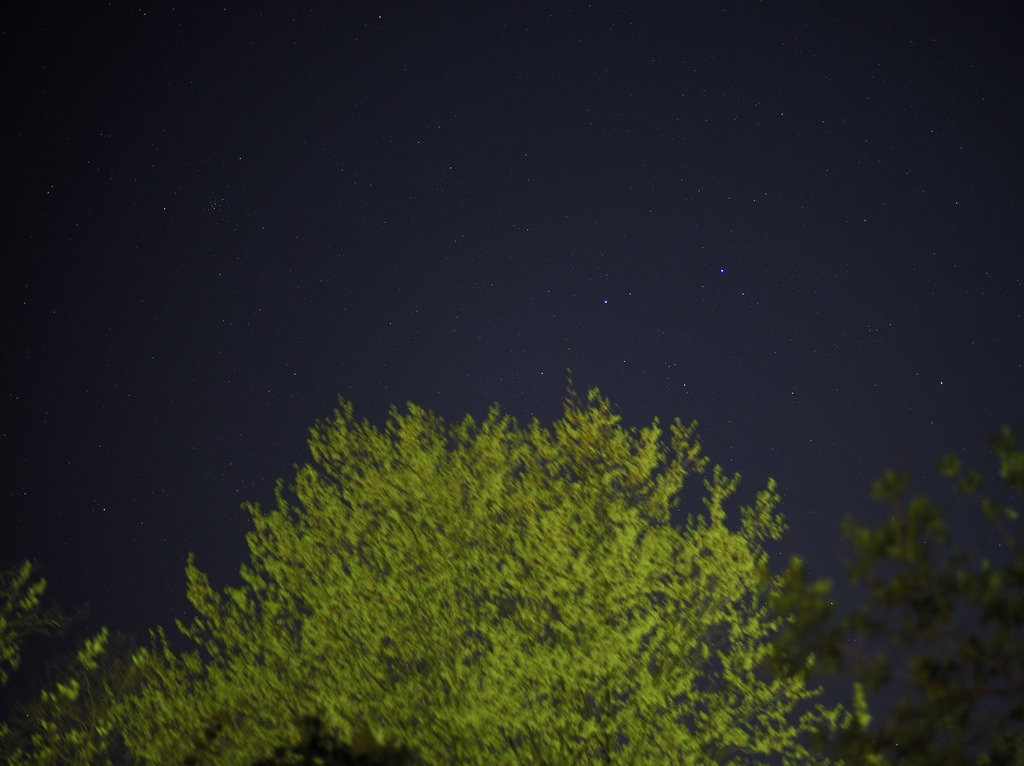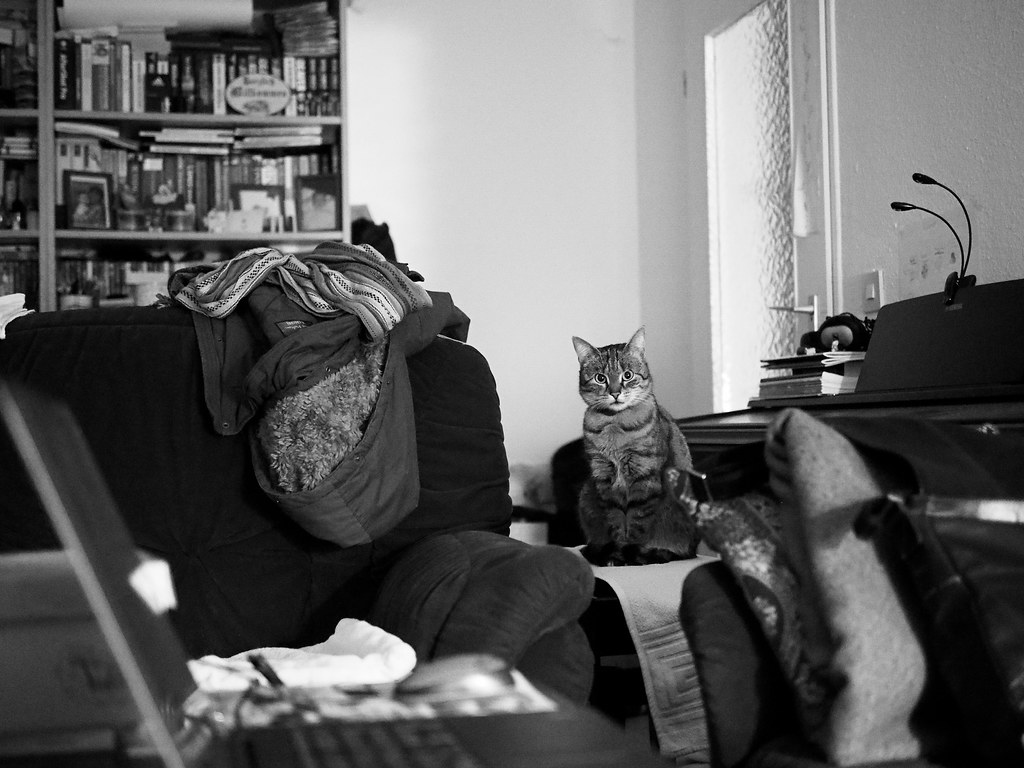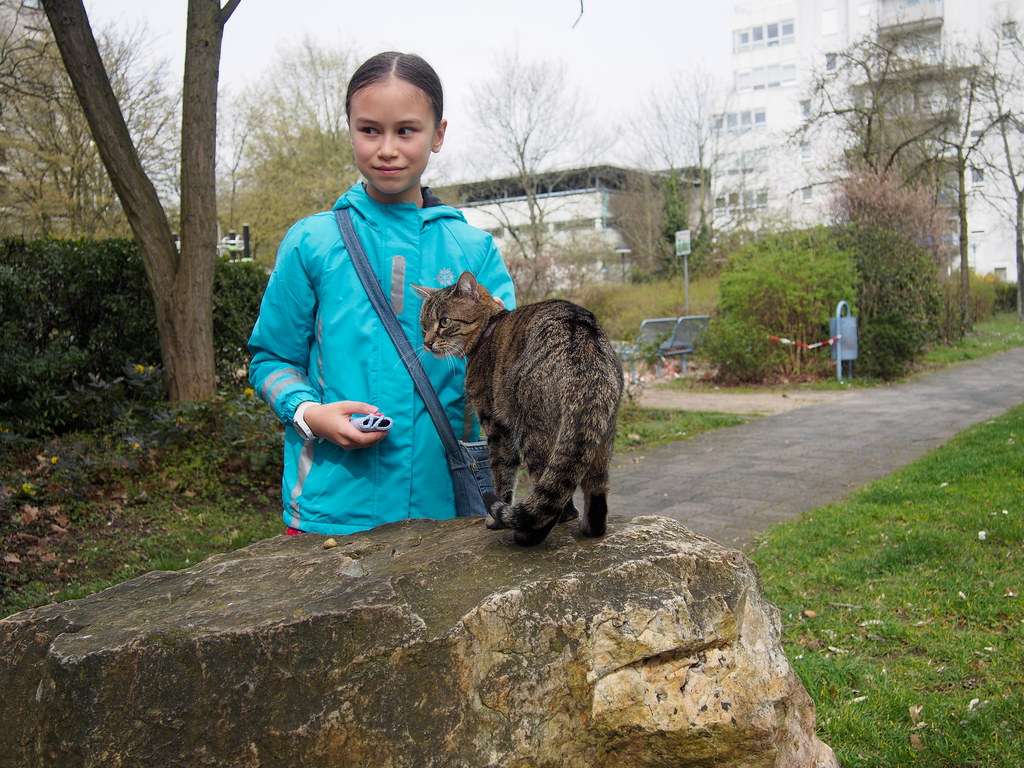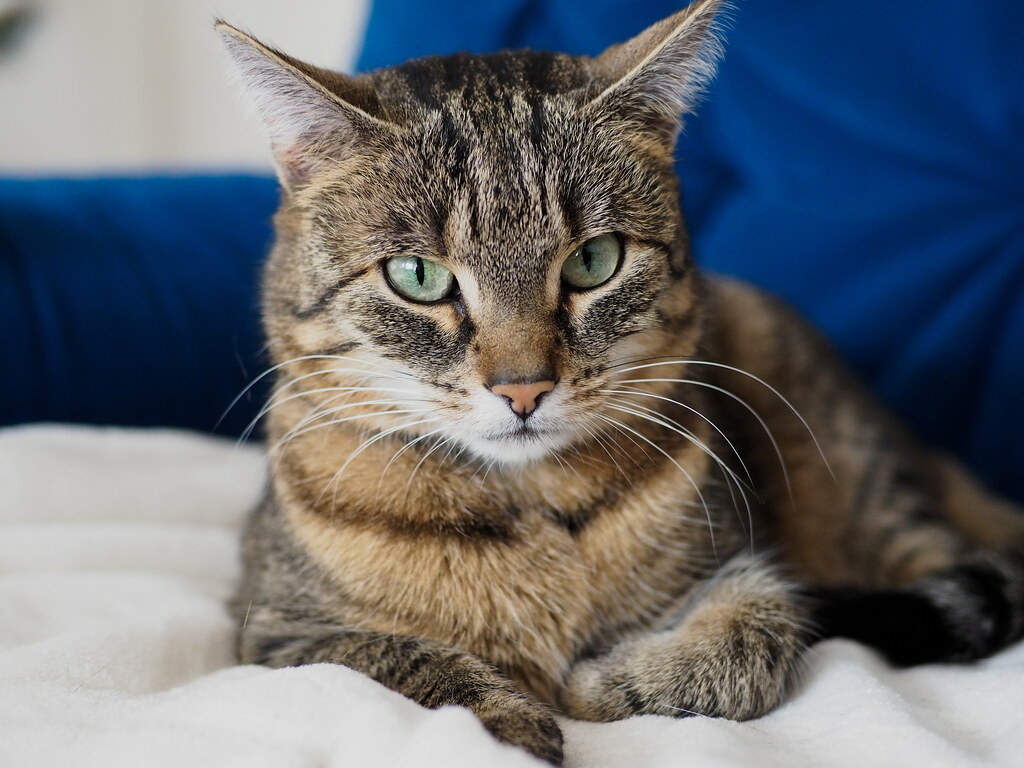In the middle of March, there was the Luminale (German Wikipedia page here; an English one doesn’t exist (yet)) festival in Frankfurt, which is some kind of light festival set up each 2 years. My colleague Basti (Bastian) wanted to see it and take some photos, so he did something here very rarely does: he brought his Nikon D810 camera, along with some lenses.
I wanted to compare it to my Micro Four Thirds camera since a while, so when Basti asked me which lens I’d like to have on it, I said: “the fifty?”, because that’s what I have as well – my Panasonic Leica DG Summilux 25mm/1.4 has about the same angle of view like his Nikkor 50mm/1.4G lens.
So I took his and my cameras (I also had my OM-2n film camera with its OM Zuiko 50mm/1.4 with me, loaded with Agfa Precisa CT100 colour slide film), and within a few minutes only I did what I normally do, which is take pictures of people – him in this case. Yesterday I finally asked him whether I could use and show these pictures for writing about my short experience with all of these cameras, and he kindly allowed it. Thanks again Basti, both for letting me handle your camera, and for showing your photos here.
Since I don’t have Lightroom or Photoshop which he is normally using, I took the raw files from his and my cameras and converted them using the free and open source RawTherapee raw converter on my Linux machine. I switched the results to black & white and simply pressed the “Auto” button in that program to get about the same exposure levels on both. The cameras were set to aperture priority and f/4, since I wanted to give both lenses a bit of a stop-down quality for better results. His camera chose ISO800 with 1/50th of a second (no image stabilization with that lens), mine used ISO1250 for 1/80th of a second (in-camera image stabilization (IBIS) with every lens attached). I also cropped the image out of my camera to the 3:2 format which his (and my film camera) would produce.
The expected outcome? Well his should have less depth of field with using f/4 on both a 50mm vs. a 25mm lens, but the rest? I was very exited to see these results, so without any further ado, here they are:

Basti, with my Olympus OM-D E-M10

Basti, with his Nikon D810
And, for comparison, the one of my film camera (1/8th of a second hand-held with ASA100 film and no stabilization), also converted to black & white for comparison:

Basti at work, film, Frankfurt 2016
Looking at the digital cameras, what do I see? Well my first reaction was something like: “Wow, very similar” (with the exception of the difference in depth of field of course, should have taken one more with my camera set to f/2 to get closer to what his camera produced). Second thought was that I drink too much coffee – none of the photos are “critically sharp” as some bloggers would say after looking at them at 100 or more percent. The IBIS in my camera helped a bit with that.
But the real differences show up as soon as you start to manipulate some of the settings in a raw converter (like the “sliders” in Lightroom) – his camera has lots more reserves for that of course, and the “noise floor” of his camera is also better than the one of mine, which was to be expected as well.
The handling of that Nikon (“full frame” as they say these days) together with the “nifty fifty” 50mm/1.4G is wonderful. You have some real camera in your hand, which is just what my brother Willi would want – these Micro Four Thirds “Pens” and OM-D cameras he finds “fiddly”, and his argument has something to consider – you have to be careful not to press any buttons when handling mine, which isn’t that much of a problem with Basti’s Nikon.
And tho his camera still has one of these flipping mirrors like my OM-2n, the shutter sound of that Nikon is also fantastic – very muted but reassuring, a bit less noise than my OM-D and lots less noise then the film camera makes.
Viewfinders? Hm. Some love optical through-the-lens viewfinders, others prefer electronic ones nowadays, because they show equally big pictures like those “full framers”, but with more information if you want/need it. I’d say that all of them are very good, and if I had to choose I’d probably take one like the Olympus VF-4 (which Mitchie has, it’s the same bigger picture viewfinder which is also used in all newer Olympus cameras (E-M1, E-M5 Mk2, E-M10 Mk2)) in favour of an analog one like the very good ones in my OM-2n or in Bastis D810. But like I wrote already, that is a matter of personal choice, experience, and opinions, and I won’t get into any religious wars about these. Some even love rangefinders…
Talking about those pictures a bit more, I love the result out of Basti’s camera, not only because it’s the better one where he is smiling (he was really working while I played around). The quality is wonderful, as is his 50mm lens, so I’d love to have one of these.
Both pictures are not like film, not even like colour slide film converted to black & white after “scanning”. I’d love to also see a direct comparison between some real silver halide films like Kodak Tri-X, Ilford HP5, and Fuji Neopan Acros 100 (or even Delta 3200) against digital cameras like Basti’s, mine, or even a Leica Monochrom, a Fuji X-Pro2, or the new Olympus Pen-F, all of which try to emulate the look of film digitally.
But I’m no camera tester, so other people who run blogs for mainly that purpose will have to help with these. Just read a good camera review of the Fuji X-Pro2 mentioned above from Jordan Steele, where he says that for digital, these ones come probably closest to a film look, especially in black & white. So if you love the look of film as much as I do, but want the way bigger convenience of digital output directly into your computers, you should probably have a look at those cameras (they’re all of different sizes and price segments, with the mentioned Leica costing more than double or almost triple of a D810, lenses not even considered).
So, for me – is that camera of Basti’s worth the triple amount of cash compared to mine? Well if I had the money, in an instant – like I’d also love to have a Leica with at least the 50mm Summilux if I could ever spend that much.
Realistically, one would have to look for alternatives if it’s the “full frame look” one is after. A Nikon D610, a Canon 6D, or a Sony A7 are alternatives which start at even under 1000€ now (for the older and original Sony A7). Spending about 1500€ for a camera and lens would get you one of these, so recommending anything smaller for about the same amount (like the mentioned Fuji or Olympus) would mean that you’re more a specialist who wants exactly what these offer.
For me, and for the time being, I am more than happy with what I have. I’ve even ordered some prints for both Basti and myself, and from what I see the result of his camera is fantastic in 30x45cm – but so is the output of mine in 30x40cm for its original 4:3 format.
So, just a quick & dirty comparison of two very good digital cameras, with some film thrown in just for the fun of it.
As always, thanks for reading. And also thanks again to my colleague Basti.













































